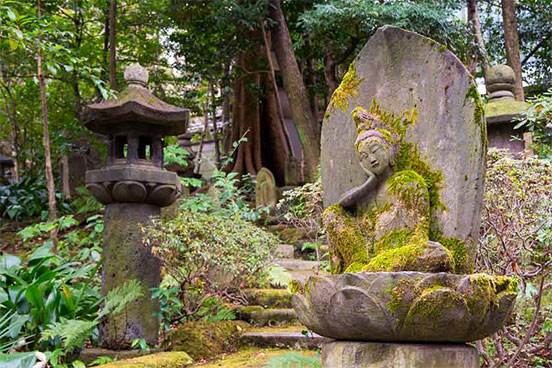Ponds, streams, and waterfalls are a central element of most gardens and represent real or mythical lakes or seas. Sometimes they provide a home for carp (koi) which add an element of colour and life. In dry gardens, water elements are symbolized by raked gravel, sand, and upright stones.

The earliest Japanese gardens were simple, gravel-covered forest clearings where the gods could manifest themselves. Over the years, the gardens have evolved into an idealized reflection of the natural landscape through the skillful and thoughtful use of stone and water features, trees, plants, and moss.

The selection of plants reflects the interest in seasonal variations. Maple and cherry trees are chosen for their seasonal appeal. Pine trees, bamboo, and plum trees are esteemed for their winter beauty. Moss is used extensively for practical reasons (moss will thrive even in nutrient poor soil) and for its ability to grow over large area and cover trees and stones.

Futarasan Shrine, Nikko
Japanese gardens demonstrate the Buddhist influences that were brought to Japan from China in the 600s. These merged with the ancient Shinto beliefs prevalent in Japan at the time to create a harmonious mix.

Stone Buddha in the garden of the Nezu Museum, Tokyo
We’re travelling to Japan in November 2021 to study “Everyday Beauty: Japanese Art and Culture” spending eight days in Kyoto where we will delight in gardens in their brilliant red and gold autumn colours.
Just 5 spots left on this tour led by Classical Pursuits’ Sean Forester.
Click here to learn more.
Click here to learn more.



